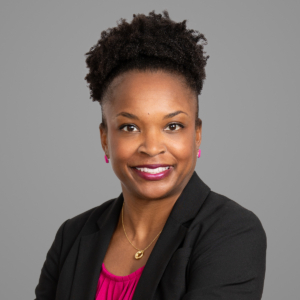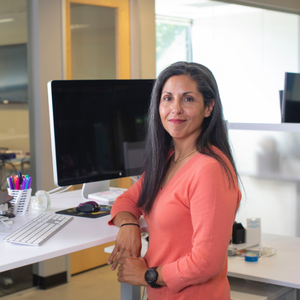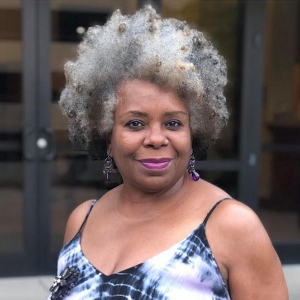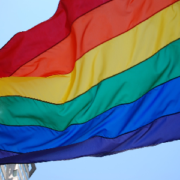Inclusion: One Destination, Many Intersectional Paths?
 Over 2/3 of companies say that DEI work is critical, and the conversation these days centers on fostering cultures of inclusion to support the diversity of workplaces we need to have, do have and will have – if organizations are optimizing potential. Organizations are increasingly aware that “diversity without inclusion is exclusion.”
Over 2/3 of companies say that DEI work is critical, and the conversation these days centers on fostering cultures of inclusion to support the diversity of workplaces we need to have, do have and will have – if organizations are optimizing potential. Organizations are increasingly aware that “diversity without inclusion is exclusion.”
According to a new Bain report from a survey of 10,000 people (4,500 women) in seven countries entitled “The Fabric of Belonging: How to Weave an Inclusive Culture,” most people agree on what inclusion looks and feels like, but what actually creates the outcome of feeling fully included is more complicated – not only to organizations, but also to individuals, themselves.
Inclusion is Nearly Universally Defined, But Rare?
We all want to belong, but how we get there, together, can feel enigmatic and the solution is far from a one-size-fits-all approach. People, regardless of individual identities, levels and experiences – describe what inclusion feels like and what it looks like in very similar, nearly universal ways.
When it comes to what inclusion feels like, the researchers define inclusion as: “the feeling of belonging in your organization and team, feeling treated with dignity as an individual, and feeling encouraged to fully participate and bring your uniqueness to work every day.” When it comes to what it looks like, people to tend to come together on the notion that an inclusive organization is diverse and where people are heard, valued and supported. Other research has shown that we feel inclusion only when our needs for both uniqueness and belongingness are met.
While people hold a universal ideal of what inclusion means to them, one of the most “stark” takeaways Bain asserts is that the majority of employees – regardless of race, gender, or sexual orientation – do not feel fully included (less than 30%), including those we tend to regard as most favored by the system and in positions of influence and power (straight white men). And no one demographic indicator can predict who feels excluded.
However, as Bain points out, “Even though the feeling of inclusion is fundamentally the same across groups, our research shows that the lived experience of inclusion is driven for various groups by a diverse variety of factors.”
To add some grounding, too, another perspective is that inclusion is really a net effect of day-to-day interactions, and individuals in particular groups experience acts and outcomes of exclusion far more frequently than individuals in other groups. In Forbes, Gaudino writes that “inclusion is invisible to those who enjoy it, because inclusion reflects the absence of negative incidents that make one feel excluded.”
Among the many examples we could draw on, McKinsey notes that black employees are 23% less likely to see there is support to advance and 41% less likely to view the promotion process as fair. Or consider that 59% of black women reported never having a casual interaction with a senior leader, versus 40% for all men and 49% for all women. Or that Asian American women have been the least likely group to experience being promoted to management.
If the experience of feeling “fully included” is pretty low in general, the evidence of exclusion is still highly punctuated for individuals in particular groups.
Feeling Included Matters For Individuals and Organizations
Amidst The Great Resignation, the feeling of inclusion is important to retention. Women who feel excluded at work are 3 times more likely to quit. Employees experiencing low inclusion are up to six times more likely to actively pursue new jobs compared with those in similar demographics experiencing high inclusion.
On the flip side, Bain found that approximately 65% of people across identity groups view an inclusive environment as “very important when considering new roles.” Employees who do feel fully included are much more likely to promote positive word of mouth about their organization. People in more inclusive environments, where psychologically safety is present, are more likely to innovate, challenge the status quo, and bring new ideas to the table. Bain argues the gains in creative thinking from inclusiveness are much greater than increasing diversity alone.
Just What Creates Inclusion?
Not surprisingly, the researchers found people hold different deep-seated notions on what creates inclusion, and those beliefs can clash in ways that create strong discomfort.
What is even more critical is that individual’s perceived notions of which “behavioral” and “systemic changes” would create more inclusion do not always match up to what actually drives impact or the experience of inclusion, so leaders are advised to “listen first for problem identification, not solution design.”
As an example, black women’s perception of how certain enablers are important to their sense of inclusion matched up 55% of the time – high perceived enablers corresponded to actual high impact on their sense of inclusion and same with low perceived enablers. But enablers such as “open and honest communication” and “coaching and professional development” were undervalued in perception, relative to how highly they were attributed to feeling a sense of inclusion for black women. And enablers such as “engagement check-ins” and “team feedback sessions” were overrated in perception relative to how attributed they were to feeling a sense of inclusion.
In inclusive cultures, people feel able to be authentic and supported to fulfill their potential, and Bain found that a common denominator of inclusion for everyone is opportunities for professional development and growth – in which there is much room for more equitable access to opportunities – and where employers can focus effectively.
When it comes to what individuals truly need, or different demographic groups, Bain emphasizes a data-informed intersectional approach that incorporates geography, demographics, and seniority to understand how to identify the systemic and behavioral enablers that can increase a sense of inclusion.
Other research has also indicated that inclusive leadership is fundamental, as Bourke and Titus point out: “what leaders say and do makes up to a 70% difference as to whether an individual reports feeling included.” They found the most important factors in cultivating a culture of inclusion are leadership commitment and demonstrating a visible awareness of the bias within oneself and the organization.
Ultimately, everyone wants to feel a sense of both authenticity and belonging and like they have access to the opportunity to thrive and fulfill their potential. People look to see if leadership is listening to this, and whether they are committed not only to the cause, but to understanding the real needs of their people.
By Aimee Hansen










